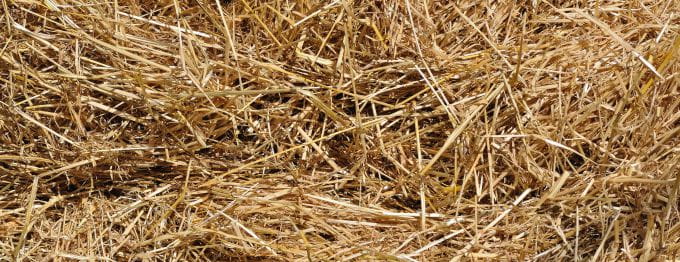If you have an aggressive encounter with wildlife, and/or if public safety is at risk, call the Turn in Poachers and Polluters (TIPP) line at 1-800-667-7561 or report online.
Producers experiencing loss of livestock or commercial crops by wildlife can access the Saskatchewan Crop Insurance Corporation Wildlife Damage Compensation Program.
If you see a wild boar, contact a Saskatchewan Crop Insurance Office at 1-888-935-0000 or visit their wild boar website.

Prevention of deer damage to agricultural products begins with the understanding that a healthy environment and a wide diversity of wildlife are synonymous. We share the land with wildlife and must coexist with them.
With this in mind, damage prevention becomes part of the day-to-day business decisions being made. The cornerstone to any effective prevention is pre-planning.
- DO NOT feed deer or elk, or allow them to stay around your hay, grain or yard.
- If winter settles in and they are used to being there, they will become EXTREMELY difficult to deter or move.
- While a few animals may not be a concern, more may become attracted to the site.
- Once the animals establish a feeding pattern, the problem becomes much more difficult to stop. Unfortunately, they often soil or destroy three or four times the amount that they eat.
- Livestock will not eat feed soiled by big game. Early action will help reduce or prevent damage.
Making modifications to the way hay or grain are stored can save endless work and frustration down the road.
Fencing
Fencing is probably the most reliable method of protecting stored forage. Any option you choose will only be effective if it is built solidly, with no openings and is maintained by keeping up repairs and keeping snow from building up against the barrier.
- Permanent fences
- Ideally, stacks should be located away from deer or elk habitat and close to the farmyard. This may discourage deer from approaching the stack or at least helps to limit their feeding time.
- If deer and elk are regularly damaging stored forage, the producer should consider erecting a permanent fence. An effective permanent fence should be at least 2.5 metres high and built of either wire or wood slabs.
- Temporary fences
- Temporary fencing can also be an effective big game deterrent.
- An effective temporary fence can be made by laying a barrier of panels – made of materials such as slabs or page wire – against the stack or by wrapping the stack with commercially available plastic fencing.
- Electric fence set on high current can also be used around the stack.
- Another method is to lean the top of a snow fence out from the base of the stack. This gives the fence the appearance of depth. Deer can jump high but don't like the appearance of width or depth.
Barriers made of straw
- Deer can be kept away by building a barrier of straw or slough bales.
- Set a row of round bales vertically on the ground then lay a horizontal second row across the top. A simple barrier of snow fencing, hog or page wire or any other suitable material can be used to make a gate.
- Straw bales can also be used to protect the ends of hay rows.
Stack management
-
Plow snow away from your bale stack. Snowbanks allow deer to climb to the top of the stack.
- If the bales are in single rows, blow snow on top of the bales. The snow hardens and deer have trouble digging through to the feed.
- Note: Compensation for deer damage to stored hay is available through the Saskatchewan Crop Insurance Corporation. In order to qualify, efforts to prevent damage must be applied and maintained and reasonable hunter access allowed during legal hunting seasons.
Protecting grain piles
-
The best way to protect grain piled on the ground is to build a barrier around the pile.
- One method is to surround the grain pile with round bales stacked on end. Deer will still be able to jump over the bales, so push some stakes into the bales and use snow fence or stackwrap to raise the barrier an additional metre or so. Many farmers have also successfully used a steel or plywood ring around the base of the pile and a heavy tarp or square bales to cover the grain.
- Do not allow snow to build up around the pile.
- Ensure that piles of grain are moved into proper storage as soon as possible.
- Note: There is no compensation available for grain stored in piles

